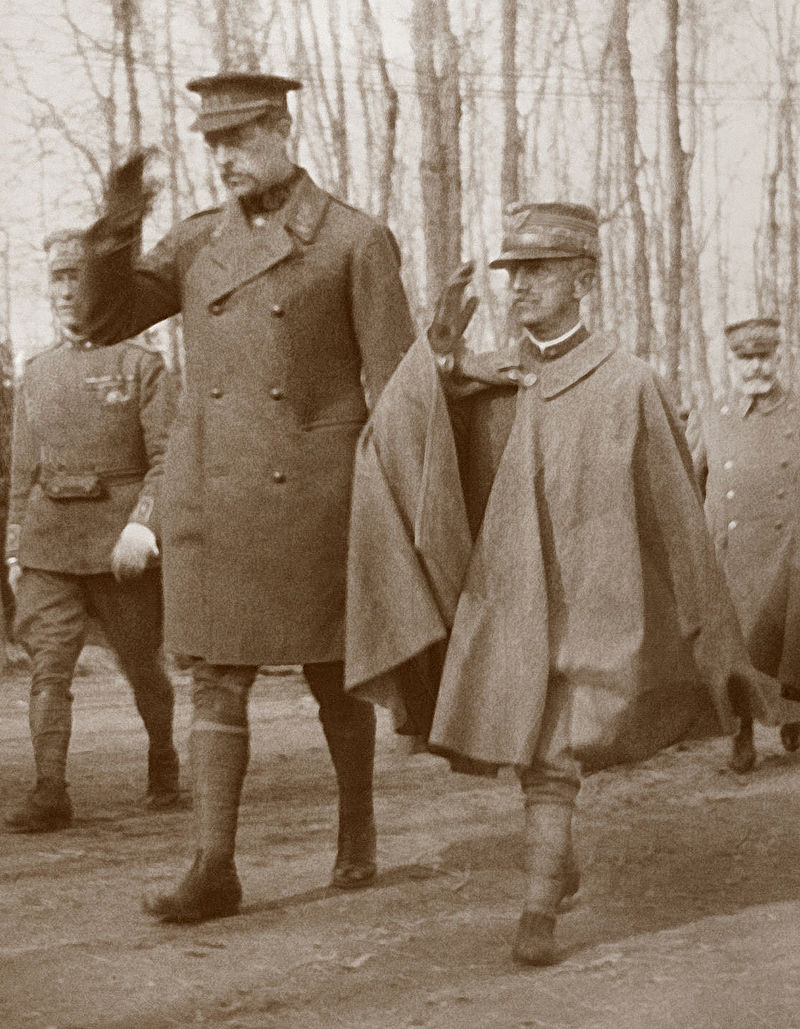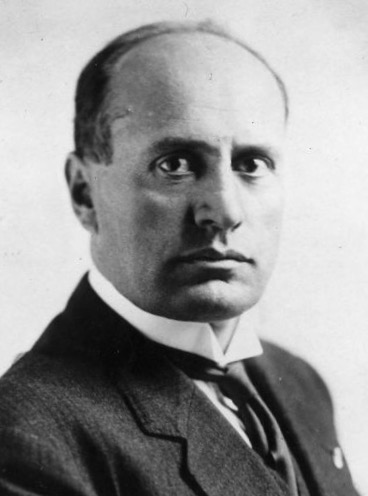by Scott Mehl © Unofficial Royalty 2016

Photo Credit – Wikipedia
King Vittorio Emanuele III of Italy
King Vittorio Emanuele III of Italy reigned from 1900 until his abdication in 1946. Born in Naples, Italy on November 11, 1869, Prince Vittorio Emanuele Ferdinando Maria Gennaro of Savoy, styled Prince of Naples from birth, was the only child of King Umberto I of Italy and Princess Margherita of Savoy.

Vittorio Emanuele with his mother. source: Wikipedia
Following a private education at home, in which he excelled in languages, history, and geography, Vittorio Emanuele studied at the Nunziatella Military School in Naples and the Military Academy of Modena. He then served with the Italian forces in Naples, Como, and Florence. He was also an avid numismatist.

Vittorio Emanuele and Elena. source: Wikipedia
On October 24, 1896, Vittorio Emanuele married Princess Elena of Montenegro, the daughter of King Nicholas I of Montenegro and Milena Vukotić. A civil ceremony was held at the Quirinal Palace, followed by a religious ceremony at the Basilica of St. Mary of the Angels and Martyrs in Rome. The couple had five children:
- Princess Yolanda (1901 – 1986) – married Giorgio Carlo Calvi, Count of Bergolo, had issue
- Princess Mafalda (1902 – 1944) – married Prince Philipp of Hesse, had issue, died in Buchenwald, a Nazi concentration camp
- King Umberto II of Italy (1904 – 1983) – married Princess Marie José of Belgium, had issue
- Princess Giovanna (1907 – 1943) – married Tsar Boris III of Bulgaria, had issue
- Princess Maria Francesca (1914 – 2001) – married Prince Luigi of Bourbon-Parma, had issue
While on a cruise in the Mediterranean with his wife, Vittorio Emanuele was notified of his father’s assassination on July 29, 1900. The new King and Queen quickly returned to Italy. Somewhat unprepared to ascend the throne as he was expecting his father to reign for many more years, the rather diminutive sovereign (standing at just over 5 feet tall) quickly made strides to become an effective, and well-respected, leader.

Vittorio Emanuele with King Albert I of the Belgians during World War I. source: Wikipedia
Initially remaining neutral at the onset of World War I, Italy soon entered the war on the side of the Triple Entente in 1915. During the war, the King was revered by the majority of the Italian people, and he spent much of the time visiting areas of Northern Italy impacted by the fighting and spending time with those suffering. His wife also worked tirelessly with the nurses in helping to care for the wounded.

Benito Mussolini. source: Wikipedia
Soon, however, the tides would turn. Italy was in the depths of depression following the war, which led to political instability. This led to the rise of the Fascist movement, led by Benito Mussolini. Already established as a member of the Chamber of Deputies, Mussolini led the March on Rome in October 1922, demanding the resignation of Prime Minister Luigi Facta, and the establishment of a new Fascist government. The government wanted the King to declare martial law, but perhaps doubting that the Royal Army could overtake the uprising, the King refused. Facta resigned and the King made Mussolini Prime Minister. Soon, all sense of democracy was pushed aside and Mussolini had established himself as the dictator, with the King merely his puppet.
In 1936, Vittorio Emanuele became the titular Emperor of Ethiopia after Italian forces invaded the country and overthrew Emperor Haile Selassie during the Second Italo-Abyssinian War. Three years later, he also became King of the Albanians after King Zog I was overthrown by Italian forces. He would later renounce both of these titles and support the restoration of the rightful monarchs although King Zog would never return to Albania.

King Vittorio Emanuele III, c. 1936. source: Wikipedia
In June 1940, Italy entered World War II on the side of the Nazis, despite the King’s warnings that the country was unprepared for war. Numerous losses brought more dependence on the German Reich, and the King’s dwindling public support suffered even further. However, after the Allies landed in Sicily in July 1943, the tides would begin to turn again. Mussolini’s power had begun to fall apart, and his own Grand Council of Fascism asked the King to resume his full constitutional powers. He did, and his first act was ordering the arrest of Mussolini. The King also formally renounced his claims to the thrones of Ethiopia and Albania, in favor of those countries’ rightful sovereigns. Less than two months later, he signed an armistice with the Allies. Confusion ensued and the Germans were able to quickly overtake many of the Italian forces. The King fled to southern Italy to avoid the German advance on Rome, and German troops freed Mussolini, who soon established a new Fascist state in northern Italy.
Despite his return to power, Vittorio Emanuele recognized that his earlier support of the Fascist regime had left him with questionable support from the Italian people. Over several months in 1944, he transferred all of his royal powers to his son, the future King Umberto II, who was created Lieutenant General of the Realm. Vittorio Emanuele was King in name only.
Before long, a referendum was held to decide whether to retain the monarchy or become a republic. Hoping to save the monarchy, King Vittorio Emanuele III formally abdicated on May 9, 1946, in favor of his son. However, his hopes were not realized, and the Italian monarchy was formally abolished just weeks later. The royal family was sent into exile, and Vittorio Emanuele settled in Egypt, taking the title Count of Pollenzo. He died in Alexandria, Egypt on December 28, 1947, and was buried at Saint Catherine’s Cathedral in the same city. In December 2017, the King’s remains were moved to the San Bernardo Chapel in the Sanctuary of Vicoforte in Italy, along with those of his wife.

Tombs of Victor Emmanuel III of Italy and Elena of Montenegro; Credit – By Fabio Daziano – Own work, CC BY-SA 4.0, https://commons.wikimedia.org/w/index.php?curid=64991612
This article is the intellectual property of Unofficial Royalty and is NOT TO BE COPIED, EDITED, OR POSTED IN ANY FORM ON ANOTHER WEBSITE under any circumstances. It is permissible to use a link that directs to Unofficial Royalty.
Italy Resources at Unofficial Royalty
